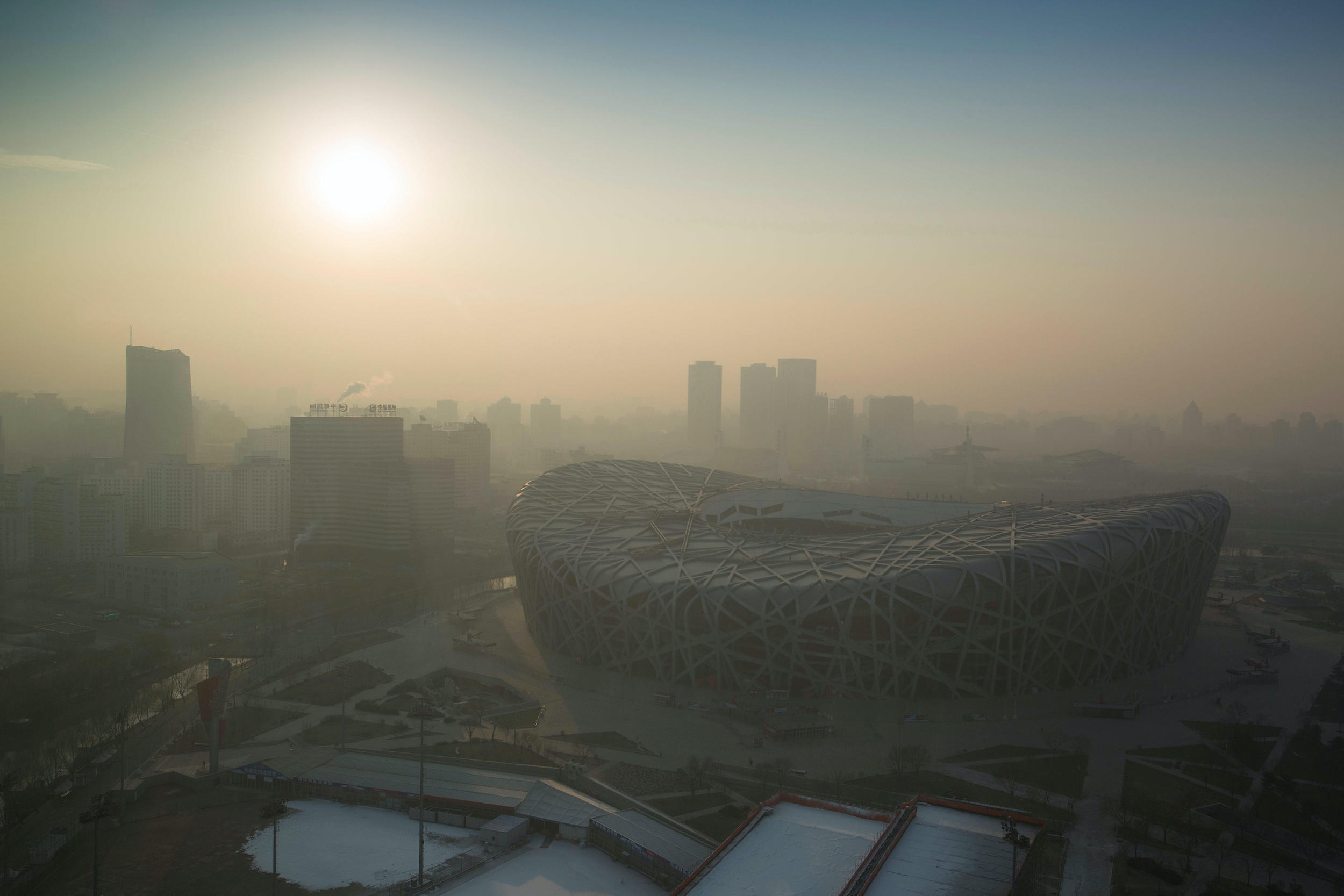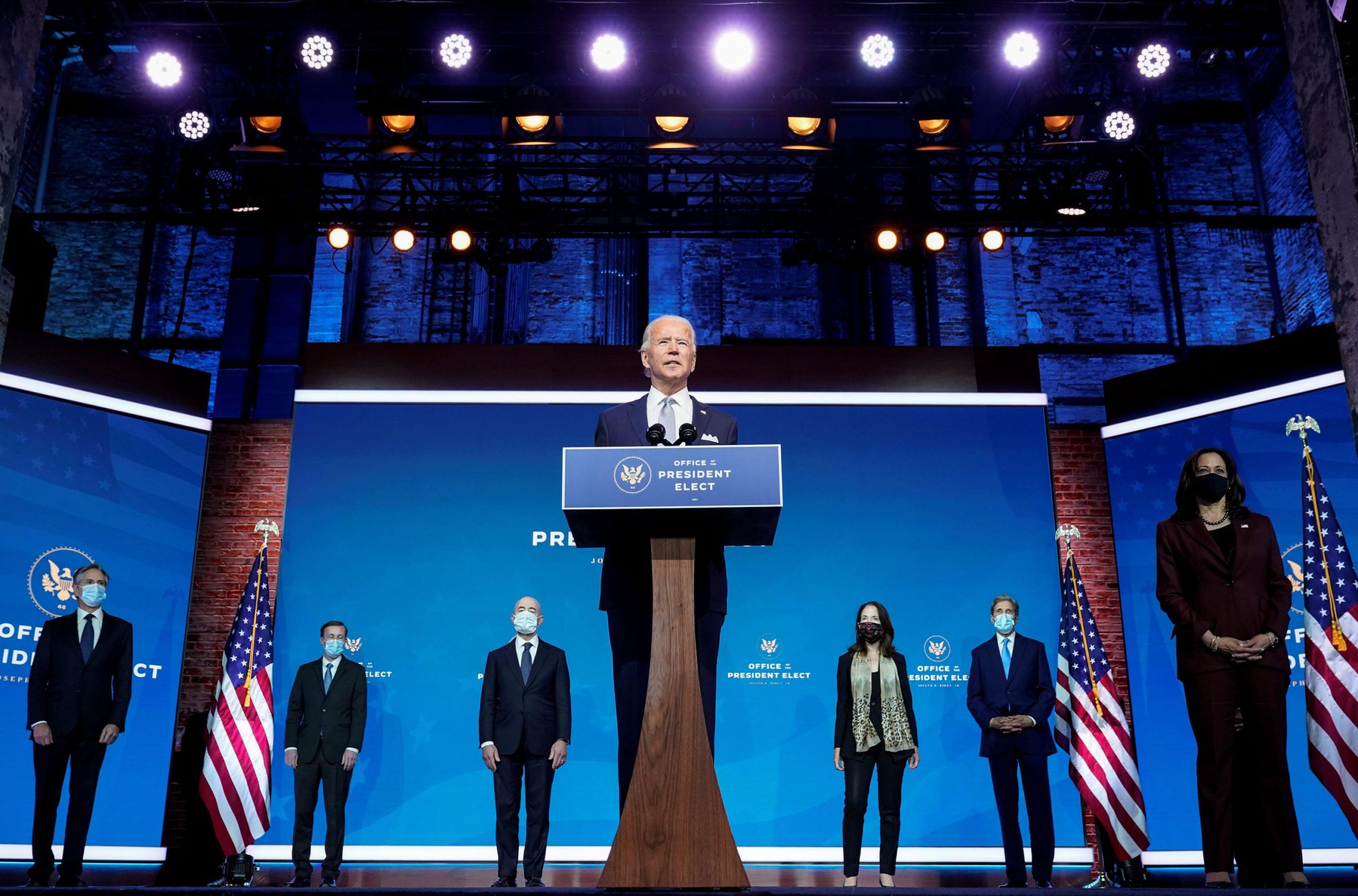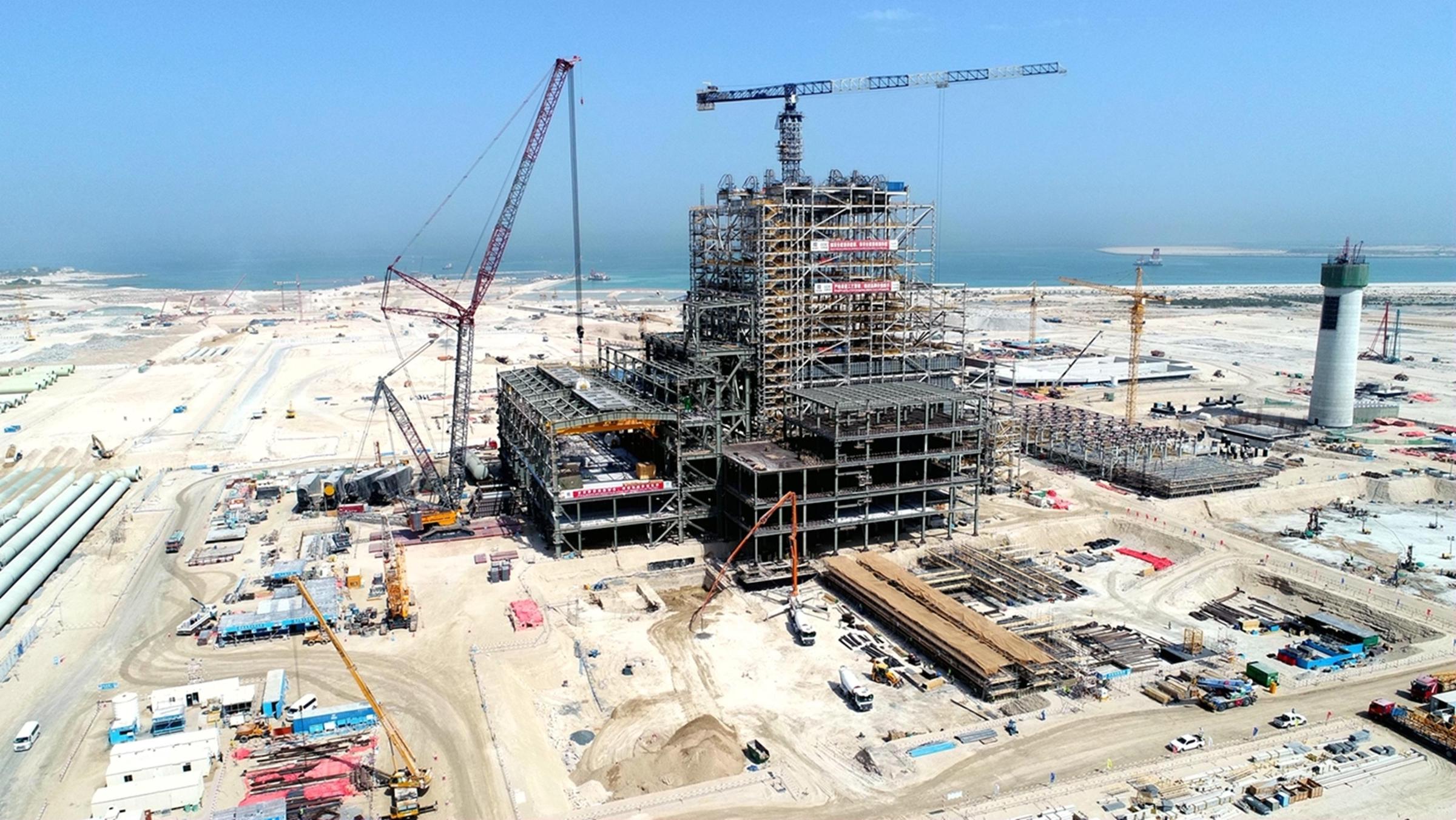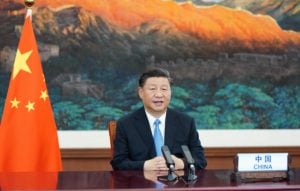Since 2014, China has embarked on a new era of confident, independent international policy activism under President Xi Jinping – the origins of which can be traced back to the Chinese Communist Party’s 2014 Central Conference on Work Relating to Foreign Affairs. That conference marked the end of Deng Xiaoping’s 30-year-old dictum of “hide your strength, bide your time, never take the lead.”
The origins of China’s newfound desire to play a leadership role in the global fight against climate change can also be traced back to 2014. This includes Xi’s landmark joint announcement on climate change with President Barack Obama less than three weeks before the Party’s Central Work Conference.
Since then, China has shown a steady determination to demonstrate its own climate credentials, which increasingly has become a bright spot in China’s position on the world stage. Yet, Xi’s announcement this September that China will aim to achieve carbon neutrality before 2060 marked an important new milestone. For the first time, China has signalled it is not just willing to be a participant in the international fight against climate change, but that climate leadership has crossed the geopolitical Rubicon in Beijing’s eyes. In other words, it has become a central priority for China irrespective of the steps taken by other countries, including the United States.
This marks an important new era for the geopolitics of China’s climate leadership, but also one in which Beijing must understand that it will be judged more sharply than ever before, including by its developing country compatriots. This is especially the case as President-elect Joe Biden takes office in the United States with a wide-ranging and ambitious programme to tackle climate change both at home and abroad.
Xi has deliberately sought to differentiate China’s approach from traditional Western notions of liberal environmentalism
To best navigate these newfound expectations and responsibilities, China will need to significantly bolster its short-term efforts to reduce emissions through its 2030 Nationally Determined Contribution (NDC) under the Paris Agreement, especially with regards to its future use of coal. Piecemeal steps forward in the short-term will be insufficient in the eyes of the international community. At the same time, China must also demonstrate a propensity to achieve Xi’s vision of carbon neutrality as close to 2050 as possible and start to seriously re-orient its support for carbon-intensive infrastructure overseas through its Belt and Road Initiative (BRI).
Without these steps, any goodwill generated by Xi’s recent announcement risks quickly becoming a thorn in China’s side because of the geopolitical benchmarks it has now set for itself.
Ecological civilisation
While it was President Hu Jintao that first used the phrase “ecological civilisation” in 2007 to describe China’s own brand of environmentalism, it is Xi that has made it part of the Party’s lexicon and a key pillar for the country’s development.
In doing so, Xi has deliberately sought to differentiate China’s approach from traditional Western notions of liberal environmentalism. This includes by underscoring the economic importance of environmental action, as evidenced by his regular pronouncement that “clear waters and green mountains are as valuable as mountains of gold and silver”, a phrase Xi first used in 2005 when he was Party Secretary in Zhejiang province.
Until now, domestic imperatives have been driving China’s creeping environmentalism. The single greatest inspiration for the change in behaviour between the China the world grappled with at the UN Climate Conference in Copenhagen in 2009 and the China that was instrumental in the securing of the Paris Agreement in 2015, was rising concerns amongst the Chinese population on the level of air pollution in their cities. Declaring a “war on pollution” during the opening of the 18th National Party Congress in March 2014 underscored this.

However, that same year, Xi’s rhetoric also started to emphasise the international imperatives of climate action. This included his declaration that “addressing climate change and implementation of sustainable development is not what we are asked to do, but what we really want to do and we will do well”. Nevertheless, China remained cautious, as demonstrated by Xi’s decision not to attend a climate summit convened by former UN Secretary-General Ban Ki-moon in September 2014, which was billed as the most important moment in the lead-up to Paris.
Nevertheless, in 2015 and 2016, Xi embarked on an intensive environmental reform effort within the Party, including through embedding the concept of ecological civilisation in the 13th Five Year Plan and pitting it alongside the concepts of “The Chinese Dream” and “The Two Centenary Goals”, including to double China’s GDP by 2020. China’s vision of ecological civilisation was also a central concept in the 2015 NDC it tabled as its first commitment under the Paris Agreement.
This helps demonstrate why, by January 2017, just days before the inauguration of President Donald Trump who was elected on a platform of withdrawing the US from the Paris Agreement, Xi was prepared to use an address to the World Economic Forum in Davos to signal China would nevertheless stay the course with the Agreement. The significance of Xi’s statement at the time should not be underestimated. If China had chosen to use Trump’s formal confirmation in June of that year of his intention to withdraw from the Agreement as an opportunity to obfuscate on its obligations – or worse to also seek to withdraw from the Agreement altogether – it is unlikely that the Agreement would remain intact today. For that, the world owes China a debt of gratitude.
A new era
Xi’s announcement this September that China will achieve carbon neutrality before 2060 marks an important new era for the geopolitics of China’s climate leadership. Xi’s announcement was his most important speech on climate change since his January 2017 address in Davos and his November 2014 joint announcement with Obama.
For most of the Trump era, China’s approach to the international fight against climate change had been akin to that of a substitute teacher. Beijing had never signalled a desire to do more than simply cover the field in Washington’s absence. Important initiatives such as the establishment of the Ministerial on Climate Action (MoCA) alongside the EU and Canada were more at the behest of Brussels than Beijing. And for Beijing, this was an easy win until the breakdown in relations with Ottawa beginning with the arrest of Huawei’s Meng Wanzhou in late 2018, which made the optics of co-chairing this forum difficult.
However, September’s announcement demonstrated that China’s diplomatic calculation has now changed. With a deadline looming next year for countries to respond to the Paris Agreement’s invitation to develop long-term decarbonisation strategies for mid-century, and to enhance their short-term climate targets (NDCs), few expected China to make any serious pronouncements on either before the outcome of November’s US presidential election was clear. And in the event of a Biden victory, Beijing would still have a sweet spot between November and January to make announcements to head off future pressure from a Democratic administration in Washington. The fact Xi decided China should nevertheless be prepared to adopt – for the first time – a clear pathway to decarbonise its economy was therefore hugely significant.
China will now be judged on an increasingly level playing field to the United States, European Union, and Japan
The fact that Xi’s announcement also made no reference to China’s traditionally hard-held bifurcation between developed and developing country responsibilities, or indeed linked China’s actions in any way to the action of others, was also hugely significant. Xi’s dismissal of the Europeans’ attempts to extract such an announcement just a week earlier during a virtual EU–China leaders’ meeting underscores he clearly now sees greater geopolitical value in China’s preparedness to signal its desire to act alone compared to the domestic value of being seen to use minor steps by China as a lever for extracting stronger commitments from the developed world in return.
New geopolitical benchmarks
The challenge for China now is to live up to the new geopolitical benchmarks it has set for itself in the eyes of the international community. This includes among its G77 developing country compatriots, including the many island nations whose very existence hinges more than anything else now on the actions of developing countries such as China, as well as India (with Xi’s announcement, India is now clearly forecast – for the first time – to become the world’s largest emitter). In other words, China will now be judged on an increasingly level playing field to the United States, European Union, and regional powers like Japan, rather than simply rewarded for coming to the table.
At the same time, China will need to be conscious that with President-elect Biden’s inauguration in January, any goodwill it has built up in recent years for staying the course with the Paris Agreement will quickly be eclipsed by the weight of Biden’s own ambitions. This includes Biden’s determination to achieve net-zero emissions by 2050, aggressively ramp up US short-term action through a new 2030 emissions reduction target, and to have completely decarbonised the domestic energy system by 2035.

China would be wise not to cut against this, including given the troubles with the wider bilateral relationship. It is in both countries’ interests to rebuild the cooperative relationship on climate change they established under the Obama administration, and which Biden – and his anointed Special Presidential Envoy John Kerry – played a key role in creating. That is because, from Biden’s perspective, any attempt to address climate change without China doing more will inherently remain limited.
From Beijing’s perspective, a cooperative relationship will help take the heat out of US attempts to extract additional efforts by China, including with regards to its domestic use of coal and the Belt and Road Initiative – as well as potentially the implementation of carbon border tax adjustment policies and alike. Through a new framework of managed strategic competition, this can also be achieved while the overall relationship remains difficult. Indeed, climate change can be the topic that protects against the “decoupling” narrative across the board, and which builds a cooperative bridge to the United States and the broader West.
This will require a sophisticated approach by China, including to overcome its traditionally tin-eared response to the views of the international community on its climate credentials, and instead to demonstrate a willingness to understand genuine areas of geopolitical weaknesses on climate and to seek to overcome them.
Mid-century ambition
First, China would be well advised to confirm that Xi’s September announcement will cover all greenhouse gas emissions and not just carbon dioxide. According to modelling by Xie Zhenhua’s Institute of Climate Change and Sustainable Development at Tsinghua University, and a separate study by the Asia Society Policy Institute and Climate Analytics, this would put the goal squarely in-line with the global temperature limits set by the Paris Agreement, especially if coupled with deeper cuts in the short term to avoid higher cumulative emissions over time.
Ideally, China would also join the Biden administration and European Union, plus every other G7 economy, including Japan (and now also South Korea), in committing to reach this goal closer to 2050. Few governments have a propensity for effective and centralised long-term planning as China. The celebration of the 100-year anniversary of the founding of the People’s Republic of China in 2049 provides a ripe milestone for Beijing to have in mind.
The five-year anniversary of the Paris Agreement provides the perfect opportunity for Xi to further clarify China’s position, ameliorating criticism from some quarters of his September announcement while cementing a second wave of praise for what is at its heart a very bold step. At the very least, China could use this as an opportunity to formally deposit its long-term decarbonisation strategy with the UN Framework Convention on Climate Change in line with Xi’s September announcement – but unless this is met with at least some indication of a genuine attempt to build on this deadline over time, it risks merely being met with an increased level of scepticism by the international community.
Short-term ambition
At the same time, China must be prepared to do much more to reduce emissions in the short-term, including through depositing a new NDC next year in the lead-up to COP26 in Glasgow. While President-elect Biden will begin the process of rejoining the Paris Agreement on his first day in office, the United States is unlikely to be able to produce a 2030 NDC before the northern summer. And once it has, this is likely to represent a significant first restorative step, potentially by elevating the Obama administration’s pledge to reduce emissions by 26-28% by 2025 (on 2005 levels) to somewhere between a 38 and 54% cut in emissions by 2030.
China would therefore do well to heed that timeline and not seek to simply make piecemeal advancements to its own NDC before the end of 2020. While the literalists in China’s diplomatic corps will be conscious of the Paris Agreement’s original deadline of 2020 for the updating of NDCs (prior to the impact of Covid-19 and the delaying of COP26), the reality is the international community will judge the country more harshly for hastily delivering an insufficient NDC. And what is already clear is that Xi’s other announcement in September that China will now aim to peak emissions “before” – as opposed to “around” – 2030 will simply not cut it in the eyes of the international community who will be looking for China to reach this milestone by 2025, while also taking action to address the other three quantitative targets contained in its existing NDC.
The approval of a large number of new coal-fired power plants this year does not augur well for ensuring there is a green economic recovery
Notwithstanding the flexibility provided by the likely timing of the Biden administration’s own NDC, it is also in China’s own interests to wait to table a new 2030 NDC until the main elements of the 14th Five Year Plan (2021-25) have been finalised in the first quarter of next year. By all accounts, this is likely to see improvements to China’s carbon intensity and energy efficiency measures, as well as with regards to the domestic use of coal.
But in order to be credible, China must use the Five-Year Plan process, including the production of a “Special Plan for Combating Climate Change and the CO2 Peaking Action Plan”, as well as the “Plan for Energy Development and the Plan for Electricity Development” – to commit to a cap of 10 billion tonnes of carbon dioxide emissions by 2025, and to control non-carbon dioxide emissions at two billion tonnes. This would require China to also commit to limiting total coal power capacity to no more than 1,150 gigawatts in 2025 and work towards a complete phase-out of all domestic coal generation by 2040. This would mean China would also cross the symbolically important threshold of reducing the share of coal in total energy consumption to below 50% before the end of 2025.
The Five Year Plan also allows China to ground the NDC in a government-wide process, rather than simply an effort contained to the Ministry of Ecology and Environment (MEE). In other words, waiting for the Five Year Plan would provide for a stronger NDC and one with more domestic buy-in to deliver it. It would also mean the NDC can help reinforce, rather than be seen to detract from, Xi’s vision of carbon neutrality.
However, much of this will rest even more immediately on the decisions China continues to take as part of its economic response to Covid-19. The approval of a large number of new coal-fired power plants this year does not augur well for ensuring there is a green economic recovery, even with Beijing’s investment in so called “new infrastructure” such as electric vehicle charging stations and rail upgrades. Indeed, the total capacity of coal fired power generation now under development in China is larger than the remaining operating fleet in the United States.
The Belt and Road Initiative
A third area that will require a sophisticated reset by Beijing concerns the Belt and Road Initiative, and especially China’s support for large amounts of carbon-intensive infrastructure around the world, including coal-fired power stations. By some estimates, China is currently involved in the construction of more than 100 gigawatts of coal-fired power stations around the world, including in South East Asia, Africa, and even Eastern Europe.
While some would counter that China’s hand in support of coal actually extends far less than that of Japan’s or South Korea’s, this is not the case when considering foreign direct investment alongside development financing and the exporting of equipment and personnel. In fact, most estimates would put the ledger at least two-thirds in the direction of China, and only likely to get worse with Japan announcing in July that it would not finance any new coal projects abroad. South Korea’s parliament is also looking to put in place a ban on their own financing, including after the state-owned utility Kepco announced it would scrap two coal projects in the Philippines and South Africa.

Beijing should be careful not to underestimate the extent to which this has the potential to significantly impinge the BRI – the jewel in the crown of Xi’s foreign policy – in the years ahead. Already moods are shifting in many recipient countries. The awarding of the prestigious environmental Goldman Prize to Chibeze Ezekiel for organising his fellow Ghanaians against plans for a Chinese-supported coal plant in the African nation provided a powerful example of this. And this attitudinal shift will only accelerate once additional and more accessible sources of clean energy finance become available.
President-elect Biden has not only pledged to shine an uncomfortable light on China’s offshoring of emissions through the BRI on the campaign trail, but his commitment to massively ramp up America’s overseas clean energy investments also has the potential to result in a sophisticated diplomatic squeeze on China. If China does not want to be seen to be moving only at the behest of US pressure, it would be well advised to begin to make these reforms earnestly.
While the recent effort ostensibly overseen by MEE to establish a “traffic light” system for new BRI projects is to be welcome, it will require more teeth to be effective. Ultimately, the most powerful thing China could do would be to follow Japan and South Korea’s lead and halt its overseas support for coal entirely. The economic hard heads in China will find that difficult, especially as the country winds down its domestic coal sector and seeks to redeploy its human and financial capital in the sector elsewhere. But the extent to which China can at least extend many of the laws and regulations it has put in place domestically in recent years to equally apply to its overseas projects will be an important first step.
Xi’s announcement in September marked a new era for the geopolitics of China’s climate leadership. Gone are the days when China would be lauded for simply coming to the table, or for holding the table together in the absence of the United States. The decisions that China takes now as the world’s largest emitter will be judged increasingly on the same playing field as those that the United States is prepared to take, as well as the rest of the international community.
Whether China’s leaders understand this new geopolitical paradigm remains to be seen. The decisions they take in the period ahead with regards to its 2030 NDC and towards Xi’s vision of reaching carbon neutrality will be the clearest indicators of this, as will the reforms they are prepared to put in place around the Belt and Road Initiative. Piecemeal steps forward will no longer cut it, including in the eyes of their developing country compatriots.
Xi’s legacy as a climate leader in China may be assured. But his legacy as a climate leader internationally is not yet guaranteed. This is a key international opportunity for China and a key international opportunity for Xi. It is also one which aligns with the country’s domestic interests of upgrading its economy, cleaning up its environment, and shoring up its energy security.









